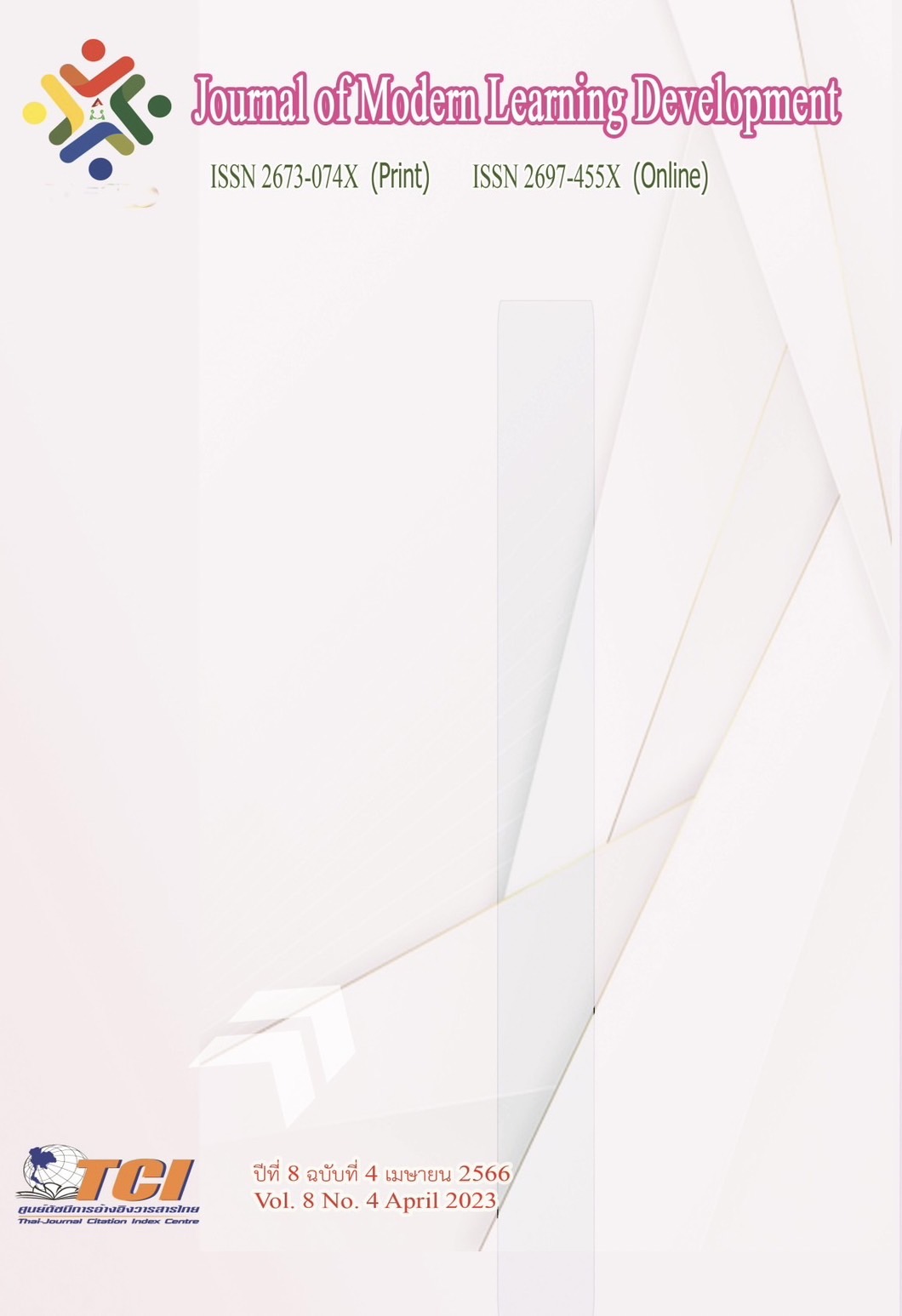A Comparison of Learning Achievement: Learning about “Thai Visual Arts” through Instructional Videos for Lower Secondary School Students
Main Article Content
Abstract
The purpose of this study is 1) to develop instructional videos on Thai visual arts, and 2) to compare secondary school students' learning achievement in Thai visual arts using instructional videos. Purposive sampling was used to recruit participants in this research, with the criteria of a comparable level of learning achievement in the visual art subject. The participants were divided into two groups of 25 each: an experimental group and a control group. Lesson plans, instructional videos, lectures, and tests were used as study instruments. Mean scores, percentages, standard deviation, and an independent t-test are used to analyze the data.
The findings revealed that 1) the instructional videos developed by the researchers were at the good level (µ=4.70, SD=0.29), which is higher than the established standard of 3.50 and can be used for instructional purposes, and 2) students who learned via instructional videos outperformed those who learned through lectures by a significant level of .05. This is consistent with the hypothesis that students who learned via instructional videos performed better than those who learned through lectures.
Article Details
References
จินตวีร์ คล้ายสังข์. (2560). การผลิตและใช้สื่ออย่างเป็นระบบ เพื่อการเรียนรู้ในศตวรรษที่ 21. กรุงเทพมหานคร: สำนักพิมพ์แห่งจุฬาลงกรณ์มหาวิทยาลัย.
ทิศนา แขมมณี. (2559). ศาสตร์การสอน : องค์ความรู้เพื่อการจัดกระบวนการเรียนรู้ที่มีประสิทธิภาพ. กรุงเทพมหานคร: สำนักพิมพ์แห่งจุฬาลงกรณ์มหาวิทยาลัย.
ภัทราดา เอี่ยมบุญญฤทธิ์, ชลธิชา ภูริปาณิก และฐิติชัย รักบำรุง. (2563). การสอนอ่านเชิงวิเคราะห์ผ่านกระบวนการเรียนรู้แบบ Active Learning เพื่อพัฒนาทักษะการคิดวิเคราะห์ของเด็กไทยยุค Gen Z. วารสารศึกษาศาสตร์ มหาวิทยาลัยบูรพา. 31 (3), 1-11.
ราชบัณฑิตยสถาน. (2556). ทัศนศิลป์. ออนไลน์. สืบค้นเมื่อ 4 กันยายน 2564. แหล่งที่มา: https://dictionary.orst.go.th/
ลภาวัน บัวเทศ. (2557). การศึกษาผลสัมฤทธิ์ทางการเรียนวิชาทัศนศิลป์ เรื่องภูมิปัญญาท้องถิ่น จังหวัดปทุมธานี ในชุดกิจกรรมการสอน. ปริญญาการศึกษามหาบัณฑิต สาขาวิชาศิลปศึกษา มหาวิทยาลัยศรีนครินทรวิโรฒ.
วิทูรย์ โสแก้ว. (2552). รายวิชาพื้นฐาน ทัศนศิลป์ ชั้นมัธยมศึกษาปีที่ 3. กรุงเทพมหานคร: วัฒนาพานิช.
อดิศักดิ์ โคตรชุม. (2561). การพัฒนาสื่อวีดิทัศน์ เพื่อประกอบการเรียนรู้รายวิชาการงานอาชีพและเทคโนโลยี เรื่อง การจัดและตกแต่งสวน ชั้นมัธยมศึกษาปีที่ 2. โรงเรียนพระธาตุขามแก่นพิทยาลัย อำเภอน้ำพอง จังหวัดขอนแก่น.
Bevan, M. (2020). Why Videos are Important in Education. Online. Retrieved October 21, 2021. from : https://www.nextthoughtstudios.com/video-production-blog/2017/1/31/
why-videos-are-important-in-education


